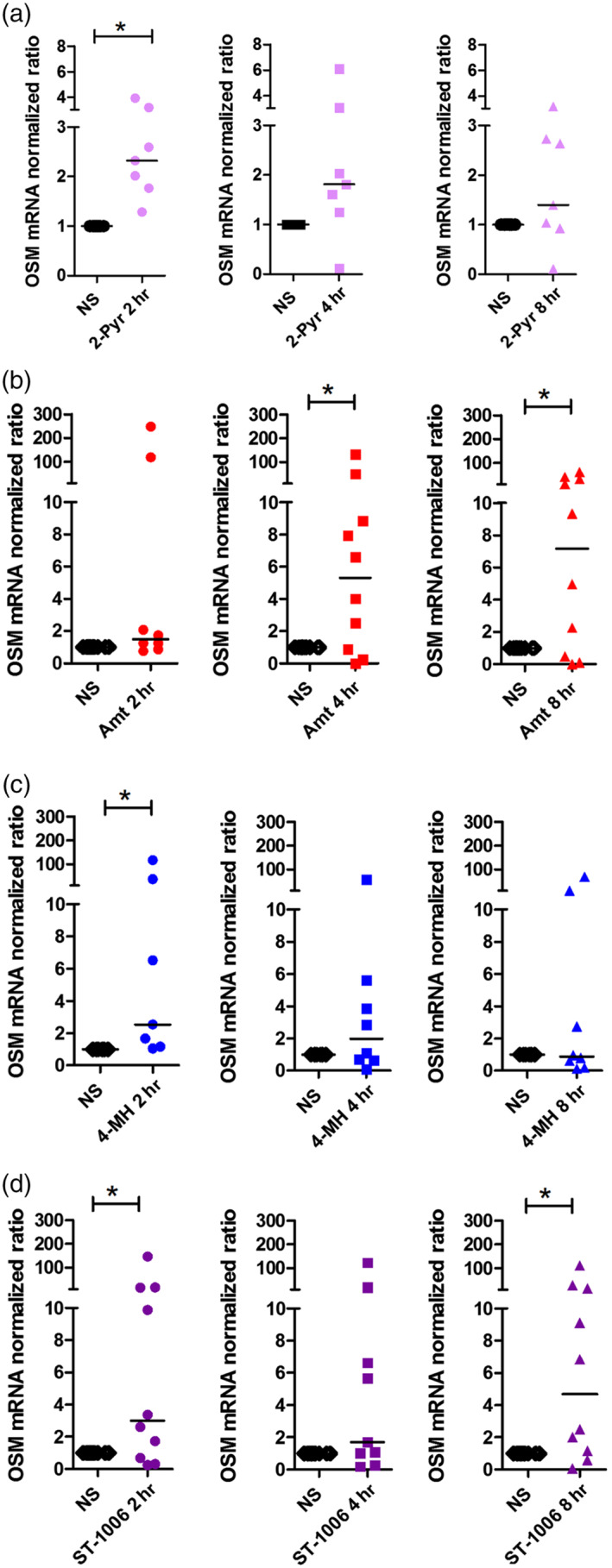Figure 2.

The specific histamine receptor agonists targeting H1, H2 and H4 receptors up‐regulate OSM mRNA expression with different time‐courses in monocyte derived human M1 macrophages. Primary human monocytes were obtained from peripheral blood mononuclear cells after 2‐hr adherence. M1 macrophages were differentiated from primary human monocytes in the presence of GM‐CSF (10 ng·ml−1) for 10 days and then stimulated with 2‐pyridylethylamine (H1 receptor agonist), amthamine (H2 receptor agonist), 4‐methylhistamine (4‐MH; H2/H4 receptor agonist), and ST‐1006 (H4 receptor agonist) for different time periods as indicated. (a) OSM mRNA expression after treatment for different time periods as indicated with 2‐pyridylethylamine (2‐Pyr; n = 7 independent donors and experiments). (b) OSM mRNA expression after treatment for different time periods as indicated with amthamine (Amt; n = 8 [2 hr] and n = 10 [4 and 8 hr] independent donors and experiments). (c) OSM mRNA expression after treatment for different time periods as indicated with 4‐methylhistamine (4‐MH; n = 7 [2 hr] and n = 8 [4 and 8 hr] independent donors and experiments). (d) OSM mRNA expression after treatment for different time periods as indicated with ST‐1006 (n = 10 [2 and 8 hr] and n = 9 [4 hr] independent donors and experiments). The amount of the target mRNA relative to the amount of the reference gene, rps 20 mRNA in each stimulated sample was normalized to the amount of the target mRNA relative to the amount of the reference gene in the non‐stimulated sample (calibrator) and expressed as normalized ratio. This was calculated using the comparative Ct method also known as the ΔΔCt method provided by the Software LC 480 (Roche Molecular Biochemicals). Data shown are individual values with medians. *P < .05; significantly different as indicated; Wilcoxon matched‐pairs signed rank test. Ct method, crossing point method; NS, non‐stimulated; OSM, oncostatin M
